Want to avoid changing your flat tire in not-so-desirable weather conditions like pouring down rain or that awful snow storm? Want to have peace of mind on the open road? Then Run Flat Tires are for you! The benefits are numerous and the safety standards high with Run Flat Tires, which have had a resurgence and increase in popularity as of late. As the name makes clear, they run flat, and are standard on nearly every BMW sold in America and on 12 percent of new vehicles. They are the solution for more and more drivers who place safety at the forefront….
Here’s what they are all about!
Flat tires can happen anywhere, often at the most inopportune time or place, leaving many people to call for roadside assistance. Changing a tire is an option, but what if there is no spare or you are uncertain how to use the tire repair kit? These are situations that occur more times than not.
Here’s where Run Flat, or zero-pressure, tires come into play. Not only can they support the weight of a vehicle for a short time, providing the driver with approximately 100 miles of range until they reach a repair shop, but they offer better stability after a blow out and a lower vehicle weight overall.
Main draw
The primary benefit of Run Flat Tires are that you can drive on them. They allow you to continue on your course, driving on a flat 100 miles after all the air is gone. Drivers need not exit their vehicle on busy roadways or not-so-desirable parts of town, but instead safely reduce their speed until they arrive at the location they need. Because this tire can support the vehicle for miles without air, a sudden deflation results in less weight transfer and tread destabilization. Above all, the steering and handling will remain near normal. The benefits don’t stop there. With the spare wheel and tire repair tools eliminated, your vehicle weight should also go down.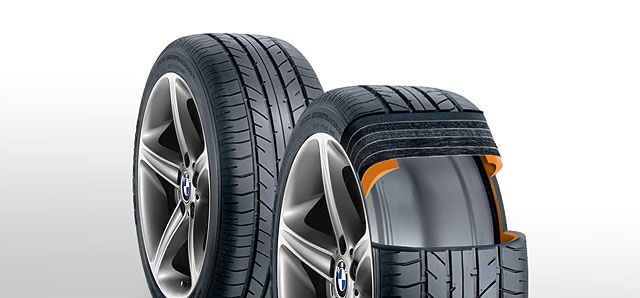
Time is limited
While driving on the Run Flat is its main benefit, there is a limit to this perk. You cannot drive on them indefinitely, and should check out your manufacturer’s specifications to find out both how fast and how far you can go.
There are two types of run flat tire systems, the self-supporting system and the support ring system. In the majority of self-supporting systems, the tire features reinforced sidewall construction that will continue supporting the vehicle in the event of air loss. With support ring systems, they employ a ring of hard rubber or another structure that can support the vehicle’s weight in an air loss condition. Only vehicles equipped with a Tire Pressure Monitoring System (TPMS) can perform with Run Flat Tires. The TPMS lets drivers know as soon as a pressure loss occurs. Without this alert, which is often the only indication, drivers may not know they are driving on an under-inflated tire. It is critical for safety that attention is paid to warnings of low tire pressure which all vehicles using Run Flat Tires must have.
In general, Run Flat Tires are pneumatic vehicle tires that resist the effects of deflation when punctured. They also ensure the vehicle and its steering control do not become immobile. They are meant to support the vehicle enough to maintain operable speeds in order to get out of the area or to a repair facility nearby.
How much do they cost?
Typically, Run Flat Tires cost about $200-$500 per tire for a passenger vehicle, or about 50-200 percent more than standard tires. The best benefit when it comes to cost comes from the fact that these tires can outlast several tire changes. It remains affixed to the wheel within the tire. It is peace of mind.
Consumers, who continue to rate safety high on their list of expected features, should still consider both the pros and cons of Run Flat Tires when weighing their decision and making that next purchase. Cost is often considered a “con” when it comes to this technology. In fact, drivers who rely on run-flats tend to replace their tires an average of 6,000 miles faster than standard tires.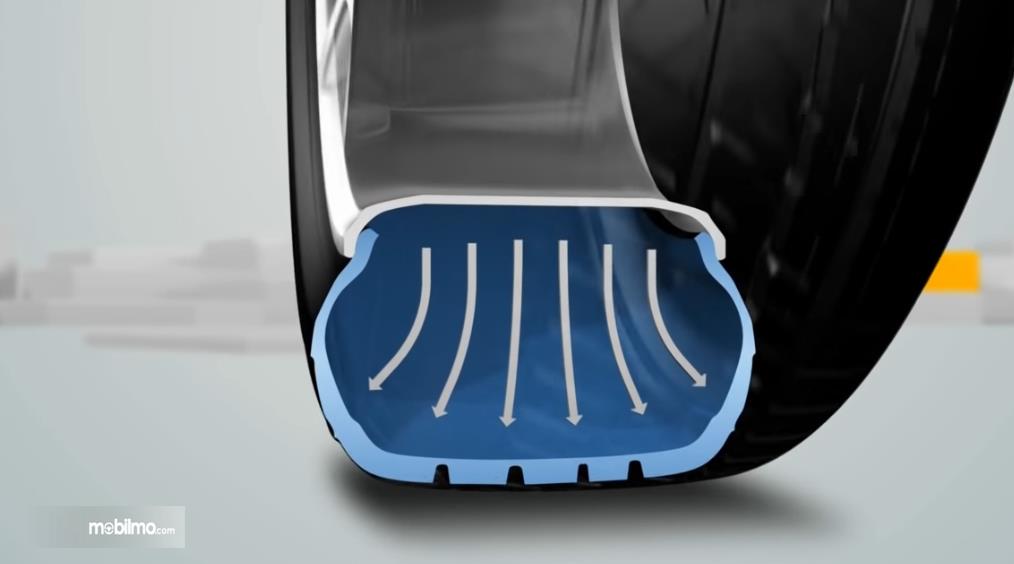 In addition, vehicles riding on run-flats are twice as likely to need to replace their tires after a flat or a blow out. That is because after they do their job, run-flats cannot be repaired.
In addition, vehicles riding on run-flats are twice as likely to need to replace their tires after a flat or a blow out. That is because after they do their job, run-flats cannot be repaired.
Other downsides include reduced fuel economy by about 1-2 percent; availability, as they are often hard to find and require specific configuration standards; and a decrease experienced by some in overall ride quality.
Despite these downsides, many manufacturers and drivers indicate that the safety and convenience of run-flats far outweigh both the cost and replacement issues. With increases in technology come an increase in run-flats usability. Most major manufacturers attach run-flat technology to their leading tires, thus reaffirming their trust in this technology.
How do they compare to a normal tire?
While early generations of run-flats were too heavy, too noisy and not durable, new run-feasts are tailored for a better ride. When compared to a regular tire, they are better equipped to handle tricky turns while deflated and when it comes to noise, fare much better.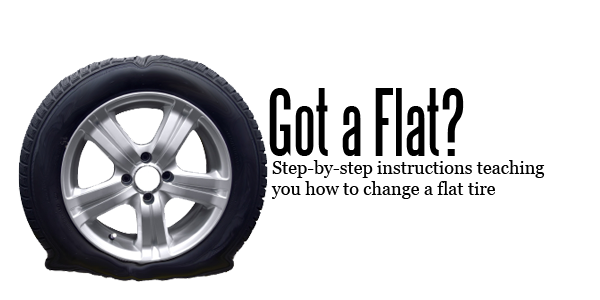 Drivers will not hear the “flap, flap, flap” of a typical flat with a run-flat.
Drivers will not hear the “flap, flap, flap” of a typical flat with a run-flat.
For many, run-flat tires rule, giving drivers an option they never had before. They are not only a good fit for the BMW experience, but becoming standard on many other vehicles. When something goes wrong, and it often does on the road, this is just one more way to ensure safety, comfort and overall customer service. While they are tried true in many aspects, there is still room for advancement. Performance-Oriented run-flat tires, options designed for electric and hybrid vehicles and fitments for the larger wheel sizes are just some of what lies ahead. See if run-flat tires are the option for you. Solid, secure and stable, they are ensuring that changing that pesky flat will be a thing of the past.
Posted in Akron BMW Service, Safety Tips | No Comments »
Sales 2060 Biscayne Blvd Directions Service 2060 Northeast 2nd Ave Miami, FL 33137
Hide Show
Can there possibly be anything more annoying than a flat tire? Whether you’re on a road trip, or within a few miles of home, nothing will stop you in your tracks quite like some busted rubber.
Worse, when a tire does go flat, your options are scarce. Most folks call some sort of roadside assistance, or perhaps even a tow truck, but this could leave you stranded on the side of the road for hours before they come to your rescue. You might be able to change the tire yourself, but this involves a lengthy process of rummaging through your trunk to get everything you need, jacking it up, undoing the bolts, and swapping them out—assuming you even have a spare tire.
The alternative? Run flat tires. Most luxury cars come factory-equipped with run flats, and BMW is no exception. In fact, BMW run-flat tires have been around for ages. So, let’s take a look at what they are, how they work, and how they can benefit you.
Well, the name is pretty self-explanatory. Run flats are tires that are capable of supporting the vehicle on the road after a puncture that would cause a regular tire to lose all internal pressure.
These aren’t intended to be driven indefinitely, though—once a run flat has taken a critical puncture, you have about 50 miles or so to find a tire shop before the tire starts failing. Drivers should also be careful not to exceed 50 miles per hour while driving on a punctured run flat. So, basically, it’s the same rules as driving on a donut, with the obvious advantage that you don’t have to physically change it yourself.
Drivers should also be careful not to exceed 50 miles per hour while driving on a punctured run flat. So, basically, it’s the same rules as driving on a donut, with the obvious advantage that you don’t have to physically change it yourself.
There are two basic types of run flat tire systems:
Now that we know what they are, and how they work, let’s check out the advantages of run flat tires vs. regular tires.
There’s really no such thing as an “ideal” time to encounter a flat tire, but there are certainly times that are less ideal.
Picture this: you’re cruising down Interstate 70, when all of a sudden you hear a pow and your car lurches, followed by the characteristic flapping sound of a flat tire. Now, have to pull over on the shoulder. If you call for roadside assistance, it’s going to be a lot harder for the tow truck to hook up to you. If you have real guts, you may decide to change it yourself. Now, you get to experience the unique discomfort of trying to jack your car up and get your tire off while traffic whips by at 80 miles per hour. Not fun.
With run flats, this becomes a problem of the past (unless you experience a full blow-out—more on that in a minute.)
If you have to compare driving on a run flat versus a spare donut, a run flat is more stable in general, even with zero tire pressure. This allows you to locate a service center with confidence. As long as you heed the manufacturer guidelines, you shouldn’t have to worry about catastrophic failure with a run flat tire.
Don’t get us wrong—it’s never a bad idea to keep a spare tire in the trunk. Still, run flat tires are stable enough that you can be reasonably sure that they’ll make it far enough down the road to reach the tire shop. This can free up valuable trunk space for other emergency supplies, which can be especially useful if you drive a sedan or a subcompact, where space is a premium commodity.
Now that we know the main benefits, we can discus a couple potential drawbacks.
Just because they named them “run flats,” it doesn’t make them totally invincible.
The sidewalls are usually reinforced, so it takes a lot more to pierce them. If they are pierced, though, you may still be out of luck and waiting on a tow.
Also, if you’re driving after the tire has been rendered flat, it’s important to exercise caution. The tire has lost some of its structural integrity, and if you hit a large bump or pothole, it’s more likely to cause a total tire failure.
Basically, you’re paying for the convenience and peace of mind that comes with not having to worry as much about a flat tire.
Because of the extra reinforcements, run flats are a little more expensive to produce, and therefore, the price gets passed along to the consumer. Still, don’t worry about the BMW run flat tire cost—it isn’t a jaw-dropping difference in price, and let’s be honest, if you’re driving a Beamer, you probably don’t mind spending a few more bucks.
This one is actually up for debate. This stems from a decade-old study by J.D. Power that found run flat tire owners end up replacing their tires more often than drivers who use conventional tires. The study found that run flat drivers tend to have to replace theirs around 6,000 miles sooner than the average counterpart.
Still, a more recent survey by the same company found that people who drive with run flats overwhelmingly approve of them, indicating that the tire technology itself is improving greatly.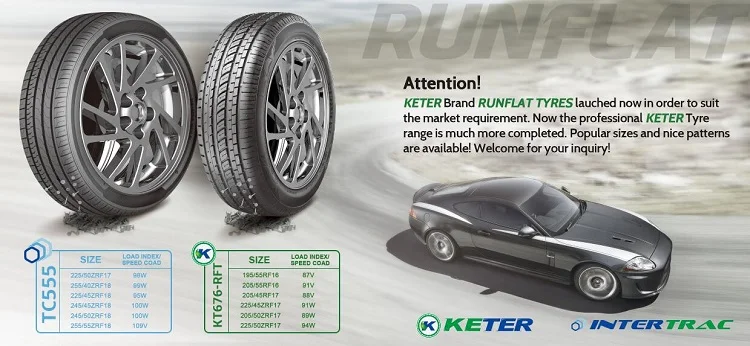 So, the jury is still out.
So, the jury is still out.
While run flat tires aren’t nearly as common as conventional ones, most major tire manufacturers make them. Many experts recommend buying the self-supporting variety, as opposed to the support ring style, due to the decreased weight, which allows for better performance, and often results in a lower price.
Due to their nature, repairing run flat tires can be a little more difficult, so if you do experience a puncture, plan to have the tire replaced. This is mostly because, even though you can drive on them for a limited number of miles, driving on a run flat that’s lost its pressure still damages it internally, because the entire weight of the car is placed on the failsafe mechanisms without the aid of proper inflation.
A few of our most recommended all-season BMW brands include:
As always, we recommend that you confer with you local Miami tire experts to find the best fit for your needs. If you spend most of your time in Southern Florida, you’ll probably be able to get away with a set of summer tires. If not, your needs may differ. At Braman BMW, we like to use genuine OEM replacement parts, so there’s no question you’re getting the best fit for your BMW, and we’re happy to guide you through the process of finding the right tires for you.
If you spend most of your time in Southern Florida, you’ll probably be able to get away with a set of summer tires. If not, your needs may differ. At Braman BMW, we like to use genuine OEM replacement parts, so there’s no question you’re getting the best fit for your BMW, and we’re happy to guide you through the process of finding the right tires for you.
While you’re online, make sure you check out our parts and service specials. If you encounter a flat, or you’re just due for scheduled tires service like a rotation, give us a call at (786) 577-5220 to schedule quick and easy help, and make sure you get the best run flat tires for BMW.
Categories: Service
Tags: New Tires Miami, BMW Tire Shop, BMW Tire Center, BMW Tires for Sale, Run Flat Tires Pros and Cons, Best BMW Tires
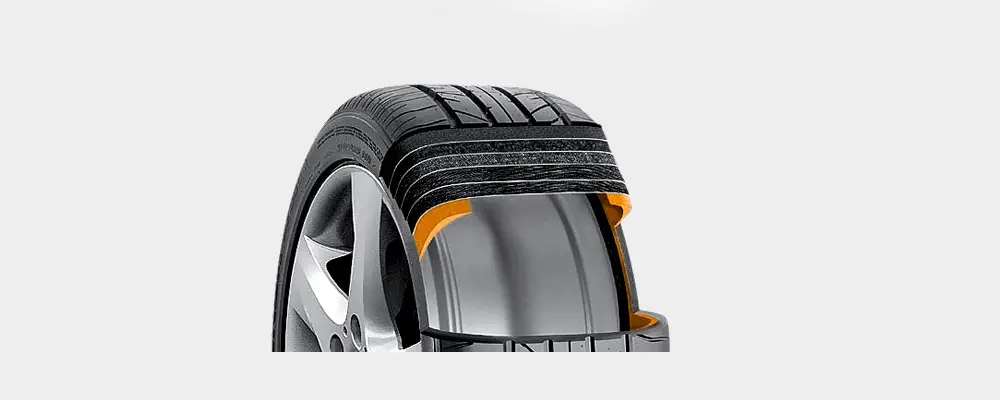 0
0 Español
; ; ;
Oleg Rastegaev
Photo: Dmitry Pitersky
Expert group: Andrey Mokhov | Oleg Rastegaev | Yaroslav Tsyplenkov
How bad is the comfort of Run Flat tires with reinforced sidewalls, on which, after a puncture, you can reach the tire shop? Why are they used today not only by BMW and Mini, but also by Mercedes-Benz, Infiniti, Lexus? We took a Bavarian "three-ruble note" with two sets of tires, "safe" and regular, and went to the landfill.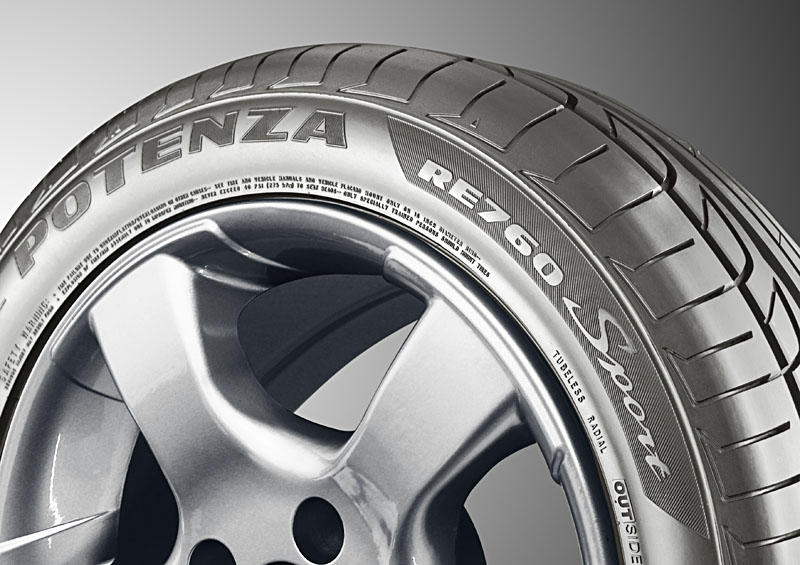
Struggling with punctures in pneumatic tires, already at the beginning of the 20th century, tire manufacturers tried to use porous rubber and bandage rings - but these unpractical solutions took root only in motorsport and in military equipment. It was not until 1973 that Dunlop offered to reinforce the sidewalls with an additional layer of rubber, which, in the event of a puncture, acted as a cushion between the rim and the road and allowed the movement to continue even at zero pressure. The technology was called Dunlop Denovo, reinforced tires were installed as an option for Fiat Panda, Rover P6B cars. Later, the name Run Flat was assigned to these tires - driving on a flat tire, that is, on a deflated tire. And they began to be truly mass-produced only at the end of the nineties of the last century, when the technology was adopted by BMW: Bavarian cars began to be designed without niches for a spare tire at all.
Run Flat tires are not only an additional layer of rubber on the inside of the sidewall, but also a different design of the carcass, bead ring and bead cord adjacent to it spare-document. Moreover, it will not just be thrown into the trunk, but placed in a specially equipped niche under the raised floor, which, unfortunately, will significantly reduce the usable volume of the cargo compartment. So is it worth sacrificing the trunk for the sake of driving comfort? And by the way, how safe are run flat tires to drive when flat? I remember very well how, 14 years ago, at the Paul Ricard track, journalists sorted out a flat Pirelli Run Flat tire on a “one” BMW.
Moreover, it will not just be thrown into the trunk, but placed in a specially equipped niche under the raised floor, which, unfortunately, will significantly reduce the usable volume of the cargo compartment. So is it worth sacrificing the trunk for the sake of driving comfort? And by the way, how safe are run flat tires to drive when flat? I remember very well how, 14 years ago, at the Paul Ricard track, journalists sorted out a flat Pirelli Run Flat tire on a “one” BMW.
Pirelli uses the “Run Flat” label, while other manufacturers use more sophisticated abbreviations: RSC (Michelin), RFT (Bridgestone) or SSR (Continental)
Take me, too, Pirelli - a modern model of the Cinturato P7 in dimension 225 /55 R17. Two sets. The one that Run Flat, with reinforced sidewalls, is also marked with asterisks: the tires are homologated for BMW and Mini cars. And the function of the aggregate carrier will be performed by the BMW 320d. His native tires are slightly lower, dimensions 225/50 R17, but may the tire gods forgive us for a five percent difference in profile height.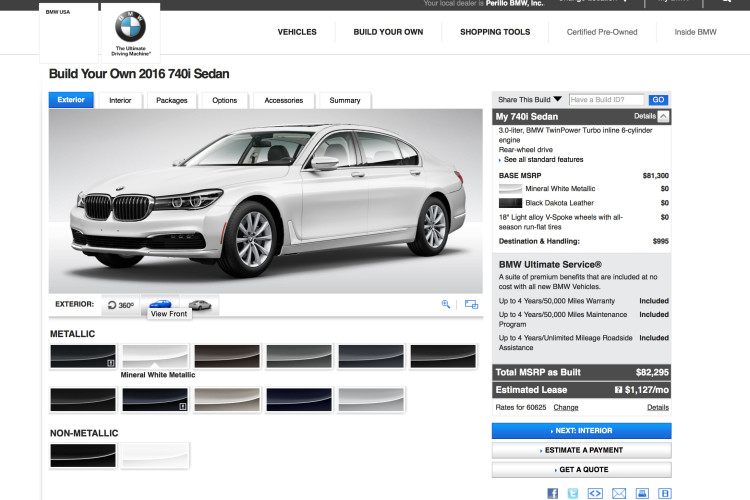
Due to the stiffer sidewalls and developed humps, it is more difficult to mount Run Flat tires. Beading Run Flat tires is, of course, more difficult: not only is the sidewall much stiffer, but also the humps are higher (these are the tides that prevent the tire bead from sliding into the inner rim stream). The wheel designed for regular tires has a hump height of 5 mm, while the one designed for Run Flat tires has a hump height of 6.2 mm. But even our ten-year-old tire changer coped with the task.
The wheel of the Krasnoyarsk company K&K (left) with dimensions 7.5x17 h3 is designed for a conventional tire. And the one on the right is marked 7.5x17 Eh3 + - the abbreviation Eh3 + means Extended Hump, extended humps of increased height (shown by arrows) for Run Flat tires
Let's go!
Is there a difference on the go? At the same pressure of 2.2 bar, Run Flat tires give more vibrations on a relatively flat surface - the body trembles more noticeably in a short wave. But on large bumps there is no significant difference: on both tires, the BMW 320d rides through the pits harshly.
Full version available to subscribers onlySubscribe now
Monthly subscription
229
Yearly subscription
27481590
I am already subscribed
The huge number of innovations in the 225/45 R18 95Y Pirelli Cinturato P7 XL * (BMW 3 SERIES G20, 3 SERIES TOURING G21) testifies that this tire was created almost from scratch. New appearance of the tire, aggressive design. The rubber compound of the tire is made with predominantly environmentally friendly materials, as indicated by the Ecoimpact icon. Separately, we should mention the RunFlat technology, which allows you to move on with a complete loss of tire pressure (tire puncture) for about 80 kilometers at a speed of 80 km / h, which increases the safety of the tire during operation, especially at high speeds.
Separately, we should mention the RunFlat technology, which allows you to move on with a complete loss of tire pressure (tire puncture) for about 80 kilometers at a speed of 80 km / h, which increases the safety of the tire during operation, especially at high speeds.
The new materials used in the 225/45 R18 95Y Pirelli Cinturato P7 XL * (BMW 3 SERIES G20, 3 SERIES TOURING G21) tire have a positive effect on grip, strength, and low susceptibility to temperature changes. Improved acoustic comfort - by 30% compared to its predecessor
Safety is a key goal of the STEP project, which is achieved thanks to a special optimized tire profile 225/45 R18 95Y Pirelli Cinturato P7 XL * (BMW 3 SERIES G20, 3 SERIES TOURING G21), which enhances traction.
This technology allows you to continue driving with a complete loss of tire pressure for about 80 kilometers. This increases the safety of the tire, especially when operating at high speeds.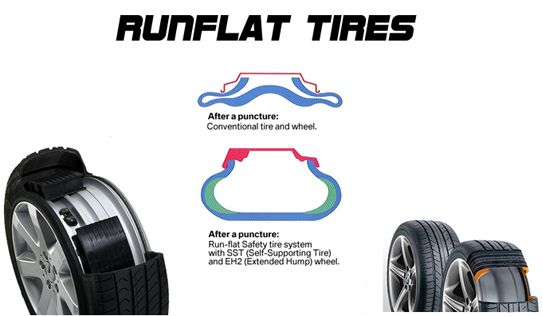
The 225/45 R18 95Y Pirelli Cinturato P7 XL * (BMW 3 SERIES G20, 3 SERIES TOURING G21) rubber compound contains a large amount of polymers that give the car stability on wet surfaces.
The drainage system of tires 225/45 R18 95Y Pirelli Cinturato P7 XL * (BMW 3 SERIES G20, 3 SERIES TOURING G21) is implemented with four longitudinal grooves, which easily cope with the removal of large amounts of water from the contact patch, and The polymers that make up the rubber compound increase the tire's grip on wet roads.